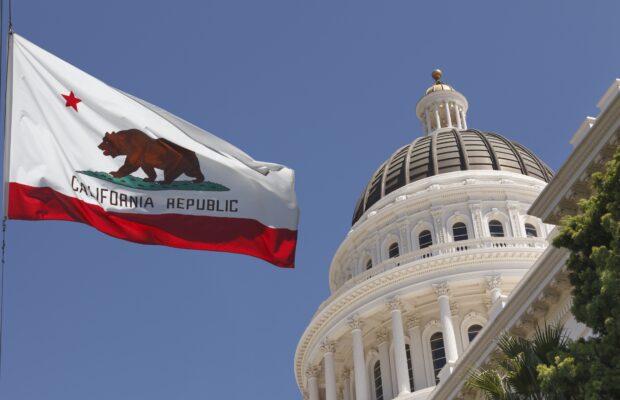Voters in San Francisco and Oakland approved[1] two measures with significant implications for residential property owners: San Francisco’s Proposition M, also known as the Empty Homes Tax, and Oakland’s Measure V, which expands Oakland’s Just Cause for Eviction Ordinance.
Proposition M – the Empty Homes Tax (San Francisco)
The Empty Homes Tax provides that owners of San Francisco properties with at least three residential units will be taxed on any residential unit that is vacant for more than 182 days in a tax year, whether consecutive or not. The tax ranges per unit for each year of vacancy, depending on the unit’s size, from $2,500-$5,000 for the first year, to $5,000-$10,000 for the second year, and $10,000-$20,000 for the third year and beyond. These amounts are subject to adjustment for inflation. The assessed funds will be deposited into a Housing Activation Fund to support housing for elderly and low-income residents and rehabilitate multi-unit buildings for conversion to affordable housing.
Exceptions to the tax include single-family homes, two-unit buildings, primary residences, units intended for travelers or other transient occupants, and units owned by nonprofit organizations or government entities. In addition, the tax does not apply during certain periods of time following: (i) a building permit application for the repair, rehabilitation, or construction of a qualifying residential unit; (ii) City issuance of a building permit for repair, rehabilitation, or construction of a qualifying residential unit; (iii) a natural disaster that severely damages a qualifying residential unit; (iv) City issuance of a certificate of final completion and occupancy for a new qualifying residential unit; and (v) the death or medical absence of an owner-occupant of a qualifying residential unit.
The Empty Homes Tax is effective as of January 1, 2024 and will expire December 31, 2053. Owners of qualifying residential units (e.g., a building with 3 or more residential units, not owned by a nonprofit or government entity) must file an annual return in the form and manner to be prescribed by the Tax Collector.
The Empty Homes Tax is the third such tax in the United States, following Washington, D.C., which reportedly generated $9.4 million from a similar tax in calendar year 2016, and Oakland, which reported gross revenues from its empty homes tax in the amount of $7.3 million in calendar year 2020. Vancouver, British Columbia, has a similar law that generated the equivalent of $21.3 million US dollars in calendar year 2019; and in the first year after the tax was adopted, Vancouver had a 21.2% reduction in vacant units.[2]
The Empty Homes Tax has similarities to San Francisco’s previously enacted Commercial Vacancy Tax, which became effective on January 1, 2022. The Commercial Vacancy Tax applies to ground floor, street-facing commercial space in certain commercial districts that is vacant for more than 182 days in a calendar year. The Commercial Vacancy Tax is calculated at an initial rate of $250 per linear foot of storefront facing the street, increasing to $1,000 per linear foot for the third or greater year that a space is vacant. Filing and payment of the Commercial Vacancy Tax will first become due on February 28, 2023.
Measure V – Expanding the Just Cause for Eviction Ordinance (Oakland)
Oakland’s Measure V passed with 65% of the vote, expanding Oakland’s eviction protections in several ways.
The pre-existing Just Cause for Eviction Ordinance (Oakland Municipal Code Chapter 8.22, Article II) (“Just Cause Ordinance”) provided eleven just causes for an eviction of a residential tenant, including, generally: failing to pay rent; failing to cure a breach of the lease; refusing to sign a new lease after lease expiration; damaging the premises and failing to repair the same; disturbing other tenants; using the premises for an illegal use; refusing the landlord’s reasonable entry; a move-in by the owner or its qualifying relative; removal of the unit from the rental market; and the owner’s performance of substantial upgrades. A local COVID-19 eviction moratorium that is still in effect prevents most evictions in Oakland, even those permitted under the Just Cause Ordinance. When the Oakland City Council lifts the local emergency, the moratorium will end and Oakland will revert to the Just Cause Ordinance, as amended by Measure V.
Previously, the Just Cause Ordinance only applied to residential rental units (“Rental Units”) built before 1996. Measure V extends the eviction protections to Rental Units of any age, except during the first 10 years after the issuance of a certificate of occupancy for a newly constructed Rental Unit or building containing Rental Units. Measure V also extends the Just Cause Ordinance to tenants of Vehicular Residential Facilities, which includes qualifying motor homes, travel trailers, truck campers, camping trailers, and park trailers.
Measure V prohibits “no-fault” evictions of children enrolled in school and educators during the school year. No-fault evictions are those unrelated to a tenant’s actions, such as an owner move-in or removal of the Rental Unit from the rental market. Evictions due to the fault of the tenant, such as failure to pay rent, may still be pursued at any time during the year. Measure V also removes from the list of “just causes” for eviction a tenant’s refusal to sign a new lease when its lease expires, and clarifies that an eviction based on illegal use does not include residing in a Rental Unit that violates building or planning codes.
Finally, Measure V clarifies that if an owner (or qualifying relative) fails to comply with move-in rules following an owner move-in eviction, the landlord must allow the tenant to move back into the Rental Unit at the same rental rate the tenant was paying when they vacated, and the landlord must pay the tenant all of its expenses incurred to return to the Rental Unit.
We will continue to provide further updates when they are available.
Contact Real Estate attorney Caitlin Connell at cconnell@coblentzlaw.com for additional information.
[1] See San Francisco Chronicle article linked here and Alameda County Election Results website linked here.
[2] See City and County of San Francisco Board of Supervisors Policy Analysis Report dated January 31, 2022, available here.



